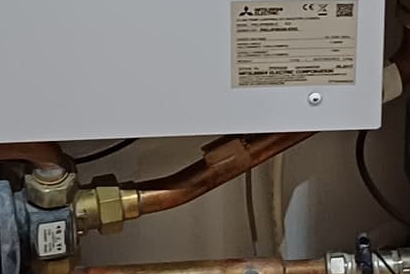Yes, that is the low-loss header that comes with pre-plumbed cylinders. You’ll have a main pump that circulates water to the outside unit and back, and secondary pump that circulates water around the radiators/UFH.
Here ![]() is where I’d expect the temperature sensor for flow to be, just before it enters the 3-port valve. There’s a pre-soldered slot for it.
is where I’d expect the temperature sensor for flow to be, just before it enters the 3-port valve. There’s a pre-soldered slot for it.

The return sensor is in a similar slot behind the 3-port valve.